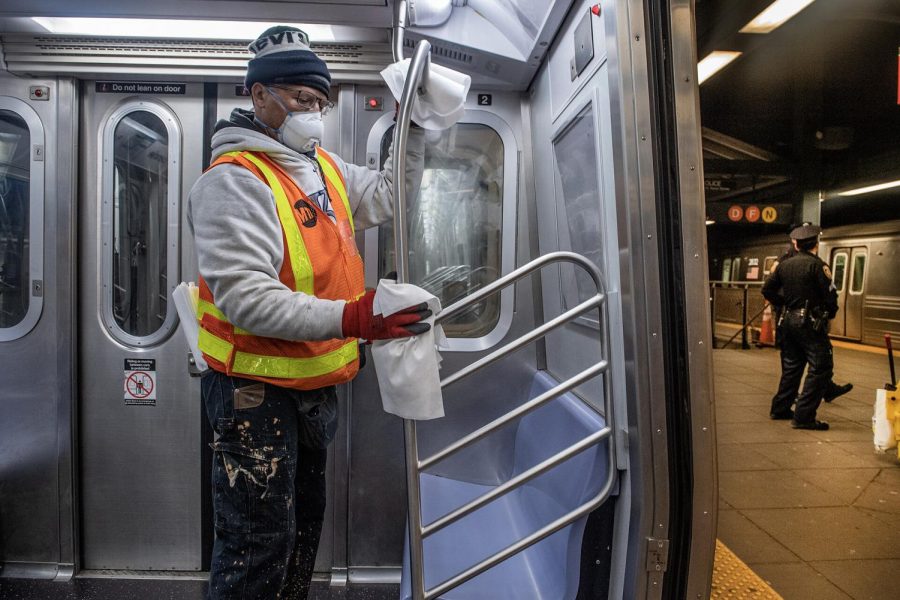MTA looks for new options as large deficits loom
February 25, 2021
The Metropolitan Transport Authority announced it has avoided severe service cuts and projected deficits for the next two years, but will need additional aid to see them through future fiscal turmoil.
This respite was attributed to $8 billion in federal aid and recent financial results that outperformed the authority’s bleak forecast, according to officials at an MTA board meeting on Feb. 18..
Although the MTA will likely receive at least $6 billion from the upcoming trillion-dollar stimulus package, transit officials warn the authority needs $8 billion to ensure they avoid estimated deficits through 2024.
“We continue to urgently request $8 billion in additional federal aid as part of the American Rescue Plan so we can serve as the economic engine leading New York’s recovery from this devastating pandemic,” MTA CEO Patrick Foye said in a statement, according to the Gothamist.
Ridership on subways, commuter trains and buses plummeted last year, which resulted in multi-billion dollar losses only months into the pandemic.
As a result, the MTA diverted billions of dollars originally designated for signal, track and infrastructure upgrades to cover its operating costs and acute losses in revenue.
With a grim outlook for future deficits, the MTA warned the state and New Yorkers last year that it may reduce 50% of its service if it did not receive sufficient federal aid, according to The Wall Street Journal.
The $8 billion the authority received from both COVID-19 relief bills has been integral to the MTA’s ability to stay afloat while ridership remains a fraction of the numbers prior to the pandemic.
Fiscal watchdogs and MTA officials, however, continue to implore the need for more money in the relief package.
“In the short and midterm there is significant relief, but we still have a long-term structural, fiscal problem that we have not dealt with,” Andrew Rein said, president of the Citizens Budget Commission, according to The New York Times.
Any additional federal aid will be directed to the handling of the forecasted multi-billion dollar budget deficit on the MTA’s hands until 2024, and will likely address its initiative to revamp its infrastructure.
“We must make these investments to ensure we don’t let the system decline as it did after the financial crisis of 2008,”MTA Chief Development Officer Janno Lieber said at the meeting, per The New York Times.
With any amount of aid still pending on the passage of the third COVID-19 stimulus, the MTA has resorted to an act many New Yorkers feared would be inevitable — fare hikes.
The MTA announced on Feb. 18 it would increase the one-way toll for New York and out-of-state E-ZPass users at the authority’s major crossings.
The toll hikes are estimated to bring in an additional $62 million in revenue this year and up to $116 million in 2022, transit officials said.
A proposal to hike fares for trains, subways and buses that was originally scheduled for March this year was rejected by the MTA because of widespread economic uncertainty and the large number of essential workers that rely on the authority’s services, according to ABC News.
The MTA recently also announced plans to enact a “permanent wage freeze” on workers who were previously promised raises last year.
While Foye has yet to comment on the freeze, New York City’s top transit union has already promised to stand with their frontline workers.
“If the MTA thinks we are going to give up contractual raises, they are out of their minds,” Tony Utano, president of Transport Workers Union Local 100, said in a tweet Thursday.
But without the federal aid, the MTA may have to dig deeper to make up for their unprecedented losses, a move that could cost transit workers and riders.








